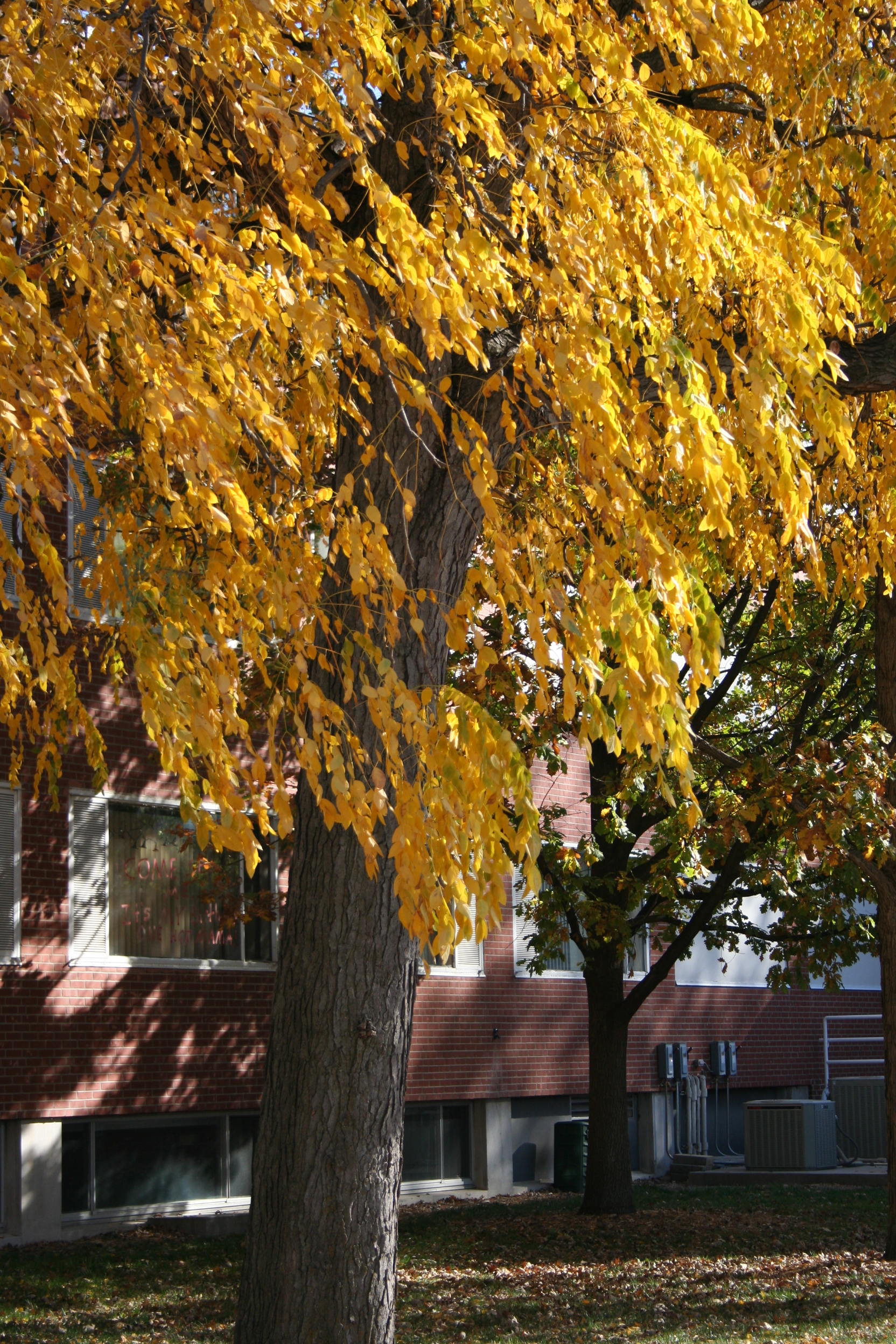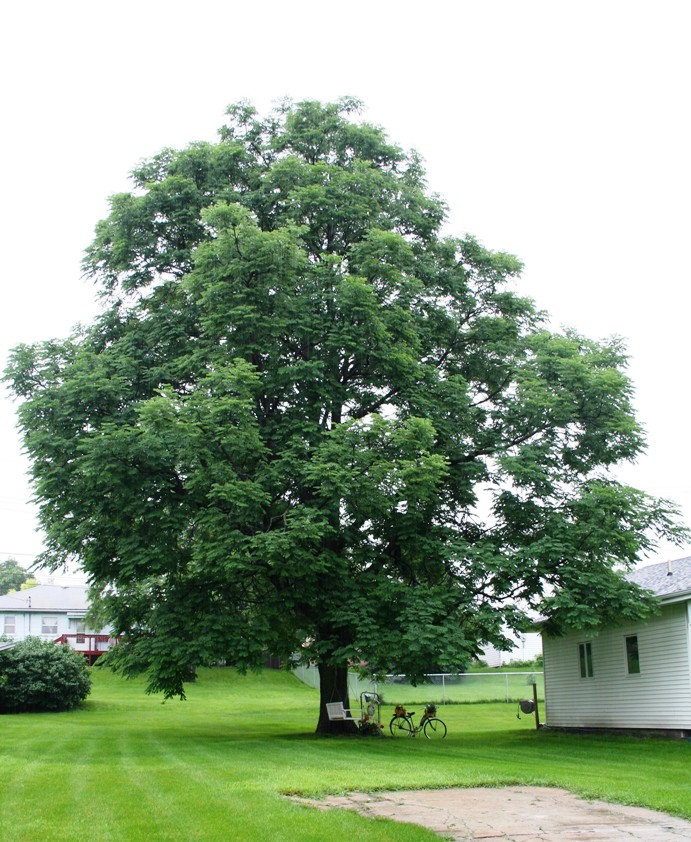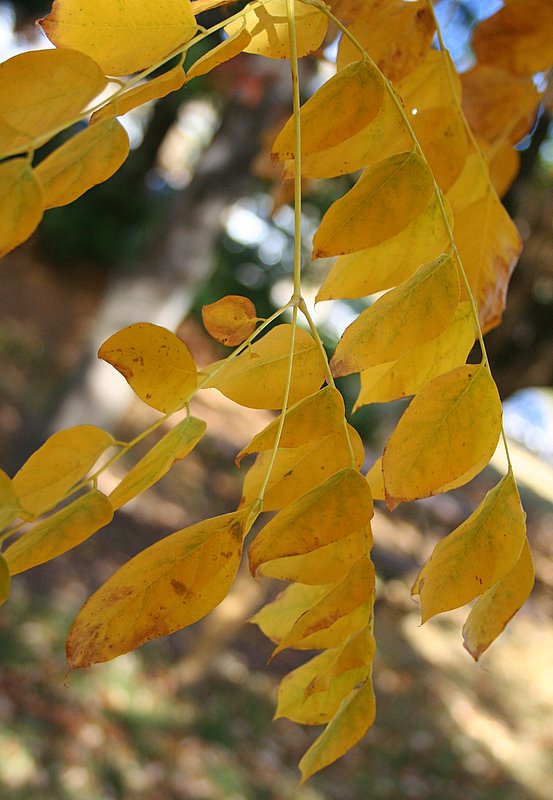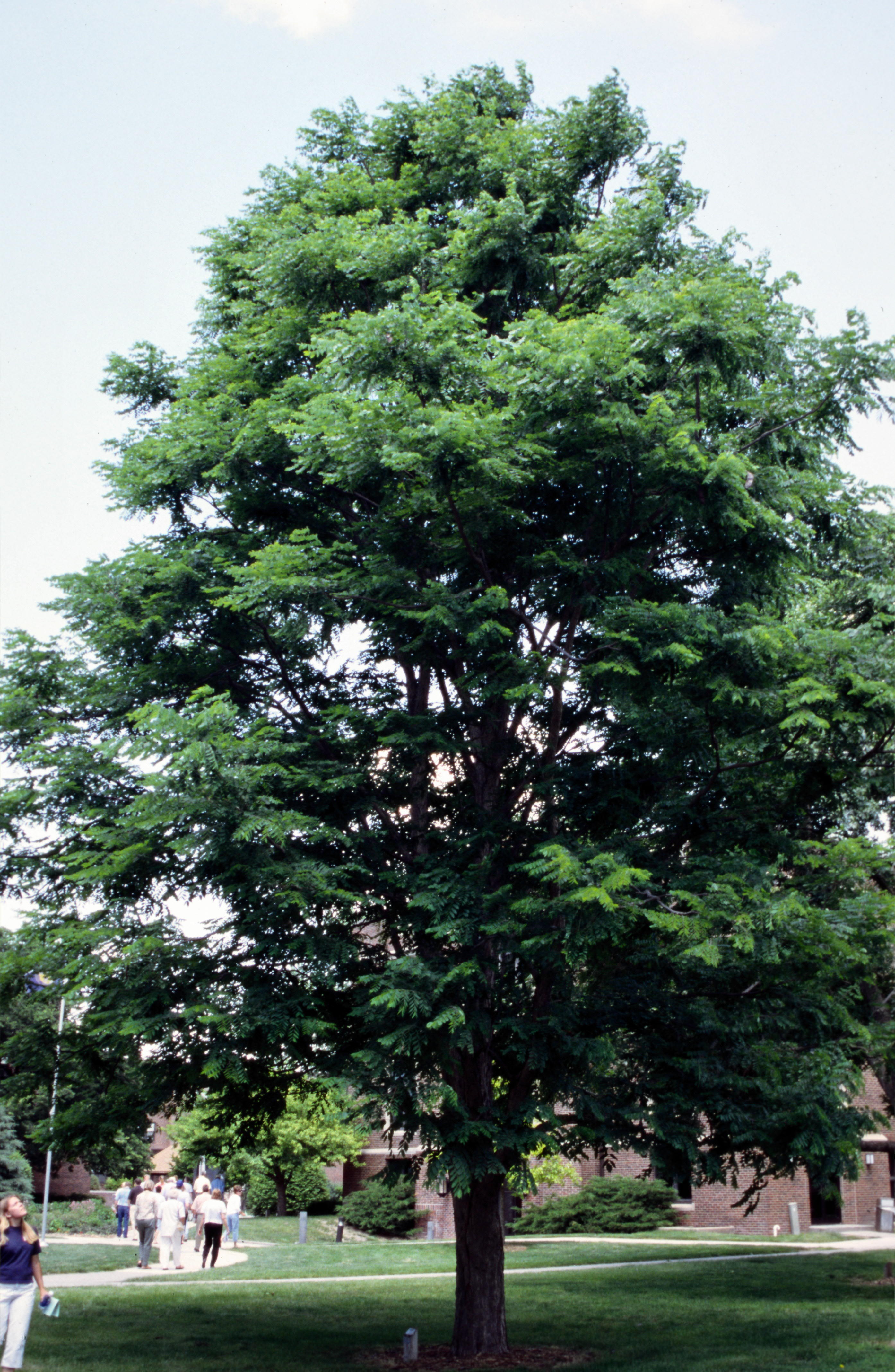Coffeetree, Kentucky
Gymnocladus dioicus, Deciduous
Kentucky Coffeetree is one of the best trees for Nebraska. This native, pest free tree is an alternative to ash and elm which have been ravaged by insects and disease. It also has a nice golden-yellow fall color, don't you think?

Where To Grow

Size at Maturity
| Tree Height | Tree Spread |
| 40-60' | 30-50' |
Tree Characteristics
Coffeetree possesses the largest compound leaf of any tree we grow and when they drop in the fall, the tree appears to be quite naked, thus its scientific name ‘gymnocladus’ which means “naked branch”. When young, coffeetree is coarse and sparsely branched (if branched at all), causing it to be rather ugly in appearance. However, much like the ugly duckling that becomes the graceful swan, coffeetree matures to be one of the most beautiful trees in the landscape, including in the winter when its bold form is completely revealed.
Wildlife Benefits
Kentucky coffeetree is used by nesting birds. Due to the tree’s toxic plant parts such as the leaves and raw seeds, there is little wildlife usage as a source of food. It is fascinating to realize that these seed pods once fed mammoths and other large herbivores browsing through eastern Nebraska woodlands tens of thousands of years ago.
Additional Considerations
The leaves, seeds and pulp are poisonous and are toxic to livestock, humans, and pets. Do additional research before you attempt making "coffee".
Interesting Facts
Coffeetree is named for its hard brown seeds that were roasted by some early U.S. settlers into a coffee-like drink. Many impressive coffeetrees can be found in communities throughout the state, including a very impressive row of trees in Kearney’s Harmon Park that has reached to over 70' tall.
Can I collect and plant coffeetree seeds?
Yep! The seeds need to be "scarified" first. This is accomplished by pouring boiling water over the seeds and allowing them to soak for 24 hours (off the stove). Discard any of the floating seeds. This is a rule of thumb that suggests the seed's embro is too small. If it floats, it is unlikely to germinate or survive outside of its seedling stage. The seeds that appear swollen are ready for immediate planting.


